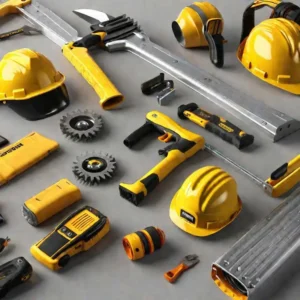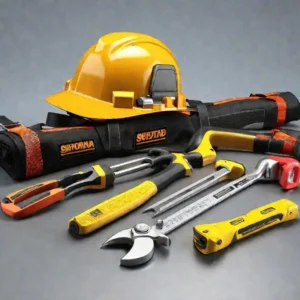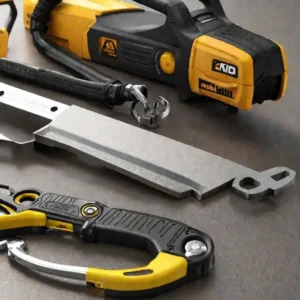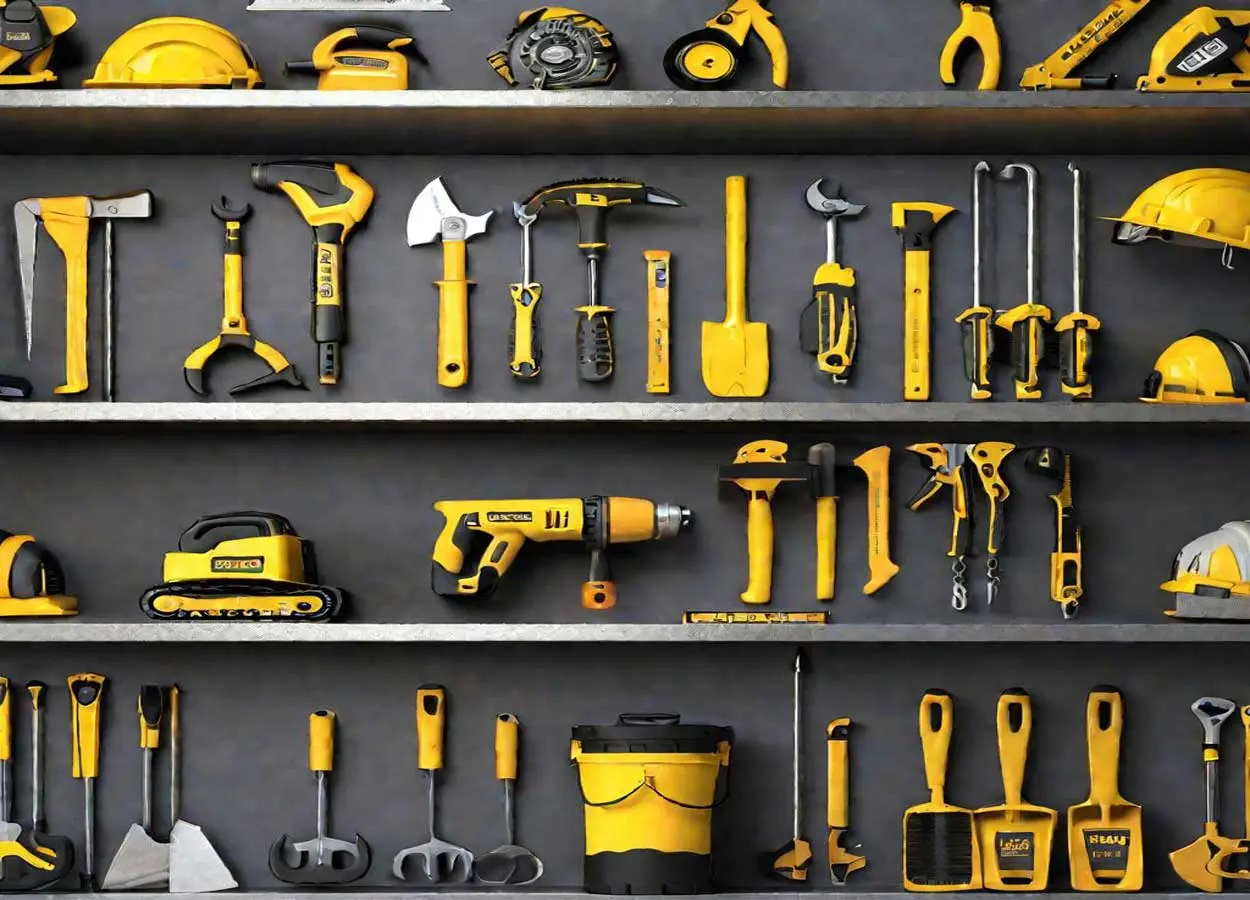Last Updated on May 2, 2024 by Admin
Right Tool is so important in systems. the significance of opting for the applicable tools can not be exaggerated. This pivotal decision not only impacts the effectiveness and quality of the work but also ensures the safety and productivity of the pool.” Choosing the Right Tool for the Job in Construction” delves into the art and wisdom of making these vital choices, pressing the significance of this process in achieving optimal results. With a focus on matching the specific demands of each task with the most suitable outfit, this composition aims to give precious perceptivity and practical advice for professionals in the field. By emphasizing the necessity of understanding both the capabilities of colorful tools and the unique conditions of each construction design, we emphasize the essential part that proper tool selection plays in the success of construction trials. This discussion from taleb kasimy trading co, isn’t just about enhancing functional effectiveness; it’s about fostering a work terrain that prioritizes perfection, safety, and excellence. so be with us!

Understanding the Basics of Right Tool Selection
Opting for the right tool is consummate in the construction assiduity, not just for the effectiveness of the design but also for the safety and productivity of the pool. The process of tool selection goes beyond simply picking the most precious or the most popular option; it involves a comprehensive understanding of the design’s specific requirements, the capabilities of the tools, and their impact on the overall construction process.
-
The part of tools in construction effectiveness
Tools play a pivotal part in determining the effectiveness of construction systems. High-quality, applicable tools can significantly reduce the time taken to complete tasks, helping systems meet their deadlines. For case, using a power drill rather than a homemade screwdriver can drastically cut down the time needed to assemble a frame. also, the perfection offered by the right tool can enhance the quality of the construction, reducing the need for expensive and time-consuming reworks. It’s a clear index that the choice of tools directly affects the design’s overall effectiveness and cost-effectiveness.
-
crucial considerations when choosing construction tools
When it comes to opting for the Right Tool in construction systems, several crucial considerations must be kept in mind to ensure the right fit. continuity is one of the primary enterprises; tools must repel the adversities of heavy use and harsh conditions. also, ergonomics plays a significant part. Tools designed with stoner comfort and effectiveness in mind can greatly reduce the threat of work-related injuries and ameliorate productivity. comity with the design conditions is another pivotal factor. For illustration, choosing a tool with the right power source( primer, electric, or curvaceous ) depending on the vacuity and convenience at the design point can make a significant difference in functional effectiveness. Incipiently, cost-effectiveness should be estimated not just based on the original purchase price but also considering the tool’s life and conservation conditions.
-
The impact of tool choice on safety and productivity
The counter accusations of tool choice extend far beyond effectiveness, significantly impacting both safety and productivity at the construction point. duly named tools minimize the threat of accidents and injuries by ensuring that the outfit is suited to the task at hand and is safe for the workers to use. For case, choosing tools with safety features like automatic arrestment or guards can help with common construction injuries. On the productivity front, the right tool can keep systems on schedule by enabling workers to perform their tasks more snappily and with less delicacy. This harmonious balance between safety and productivity not only fosters a healthier work terrain but also drives the successful completion of construction systems.

Evaluating the Needs of Your Construction Project
Embarking on a construction design, big or small, requires scrupulous planning and the right set of tools. To ensure the success of your design, it’s pivotal to estimate its requirements exhaustively. This involves considering the design’s compass, complexity, and the specific tools that will be needed throughout its phases. By rightly matching tool capabilities with design requirements, you can optimize effectiveness, minimize costs, and achieve the required quality of work.
-
Assessing design compass and complexity
The original step in choosing the right tool involves a thorough assessment of your design’s compass and complexity. This means understanding the scale of the work, the accouterments involved, and any unique challenges that may arise. For case, a high-rise structure design will have different conditions and complications compared to a domestic home addition. Consider factors similar to the design duration, the pool demanded, and environmental considerations. This comprehensive evaluation will serve as a foundation for relating the specific tools and ministry needed to meet your design’s demands efficiently.
-
relating specific tool conditions for different construction phases
Every phase of construction, from root to finishing traces, demands a unique set of tools and outfits. During the excavation phase, a heavy ministry like excavators and bulldozers are necessary for moving large amounts of earth. As the design progresses to structural work, cranes and concrete mixers become essential. For finishing the workshop, perfection tools similar to power sayings, sanders, and makeup sprayers are needed to achieve the required finish. It’s also important to consider the need for safety outfits, similar to harnesses and helmets, to cover workers throughout the construction process. By relating these conditions beforehand on, you can ensure that the right tool are available when demanded, therefore avoiding detainments and maintaining productivity.
-
Matching tool capabilities with design needs
Once the specific tool conditions have been linked, the coming step is to match these with the capabilities of available tools. This involves assessing the performance, effectiveness, and trustability of different tools to determine which bones suit your design’s requirements. It’s essential to consider factors similar to the power affair of ministry, the perfection of hand tools, and the continuity of the outfit. For illustration, when opting for a concrete mixer, consider the volume of concrete needed and the mixer’s capacity to ensure it meets your design’s demands. also, assessing the rigidity of tools for different tasks and their ease of use can significantly affect overall design effectiveness and worker productivity. By precisely matching tool capabilities with the specific requirements of your design, you can optimize resource application and achieve superior results.

The Top Right Tool for Every Constructor Needs
In the world of construction, having the right tool can mean the difference between a job well done and a design filled with detainment and dissatisfaction. The significance of choosing quality, perfection, and versatility can not be exaggerated. Quality and perfection in construction are non-negotiable. To achieve this, there are many tools that are absolutely essential. A high-quality position is one similar tool, designed so that your work is impeccably aligned and balanced. Tape recording measures are another necessary tool, furnishing the delicacy demanded in measures to avoid expensive miscalculations. For marking, a set of sharp, fluently visible chalk lines and labels are pivotal for precise cuts and alignments. Incipiently, a durable, dependable hammer and a set of screwdrivers with colorful heads cover the basics of fastening and conforming with perfection.
Some tools are celebrated for their versatility, ability to perform multiple tasks, and therefore getting inestimable on the construction point. A power drill, rather cordless for ease of movement, is one similar tool. With a variety of bits, it can drill holes, drive screws, and indeed mix accouterments when equipped with the right attachment. Another protean hustler is the indirect aphorism, which can cut through a variety of accouterments when accoutred with the correct blade. also, malleable wrenches and pliers can handle a myriad of tasks involving nuts, bolts, and pipes, conforming to different sizes as demanded. While general Right Tool are pivotal, technical tools play a vital part in specific construction tasks, frequently making a delicate job much easier and more effective. For illustration, a pipe aphorism is necessary for cutting precise shapes and sizes in pipe work.

Best Practices for Right Tool Maintenance and Safety
Maintaining construction tools is critical for having their life and trustability. Regular cleaning is the first step, which involves removing any dirt, debris, or substances that could beget erosion or damage. For power tools, checking cords for fraying and wear and tear is essential to help with electrical hazards. Lubrication of moving corridor, according to the manufacturer’s instructions, ensures smooth operation and reduces wear and tear and gash. For tools that bear sharp edges, similar to sayings or drills, keeping them sharp improves effectiveness and safety. It’s also vital to check for loose corridors or damage before each use of Right Tool, as these can lead to tool failure and accidents. Storing tools duly when not in use protects them from environmental rudiments and keeps the workspace organized and safe.
Worker safety is consummate at any construction point, and proper tool use is a crucial element. Wearing the right particular defensive outfit( PPE), similar to safety spectacles, gloves, and observance protection, depending on the tool and task, can help with injuries. Reading and understanding the tool’s primer before use ensures that workers are apprehensive of specific pitfalls and safety features. It’s also pivotal to use the right tool for the job to avoid abuse that can lead to accidents. Regularly examining tools for signs of wear and tear or damage and reporting any issues incontinently helps maintain a safe working terrain. enforcing a culture of safety, where workers feel empowered to speak up about unsafe conditions, further enhances overall point safety.
Conclusion
in this article from taleb kasimy trading co, we discussed about Choosing the perfect Tool for the Job. the selection and management of tools in the construction industry play a critical role in the success of any project. Understanding the basics of tool selection, evaluating the specific needs of your construction project, being informed about the top tools every constructor needs, staying abreast of the latest innovations, and adhering to best practices for tool maintenance and safety are all fundamental steps toward achieving efficiency, safety, and productivity on the job site. also, you can read Top power tools article for more information too. It’s clear that the right tool not only facilitates the smooth execution of construction tasks but also significantly contributes to the overall outcome and satisfaction of both constructors and clients. Also, This comprehensive approach to tool selection and maintenance underscores the importance of precision and responsibility in the construction industry.

